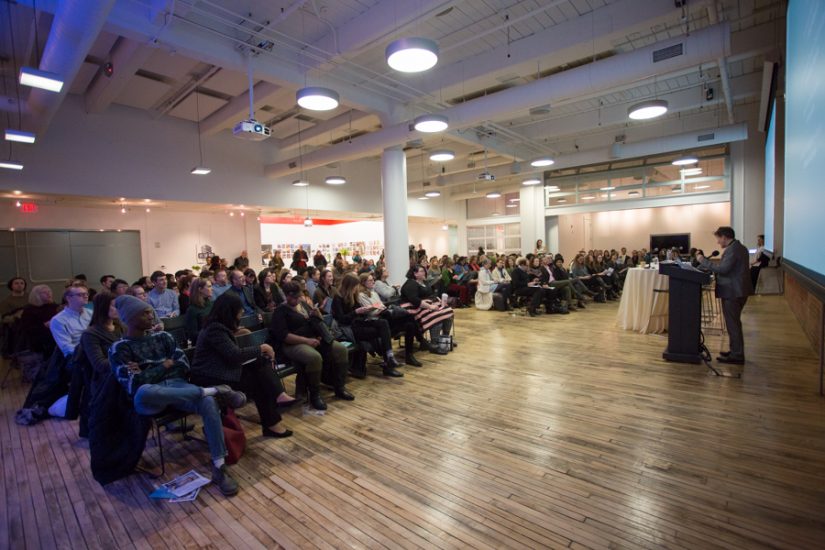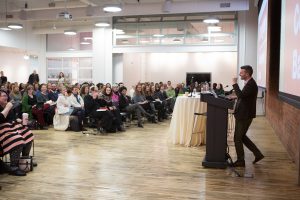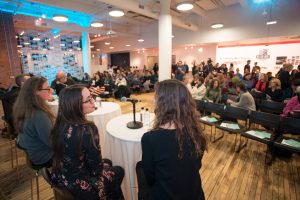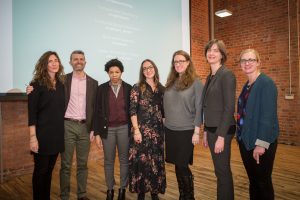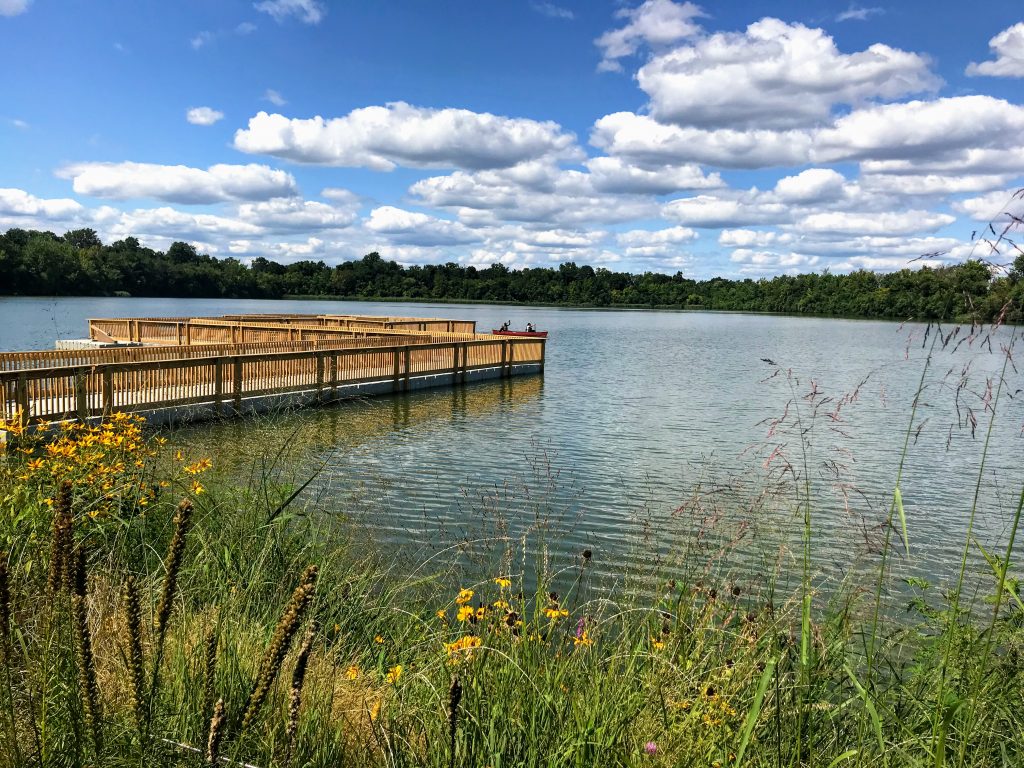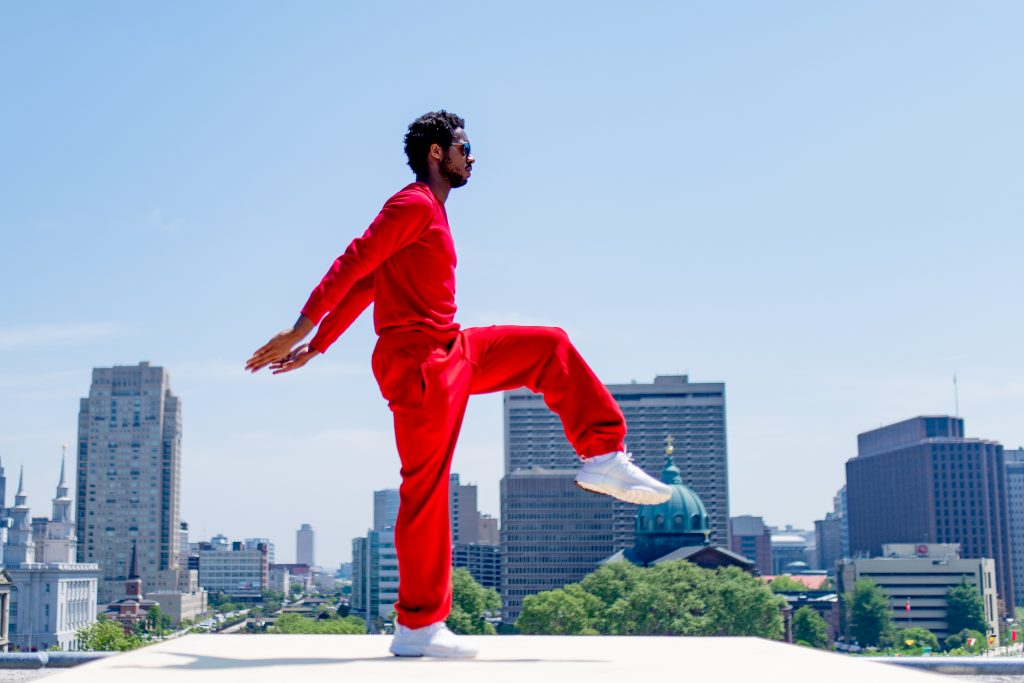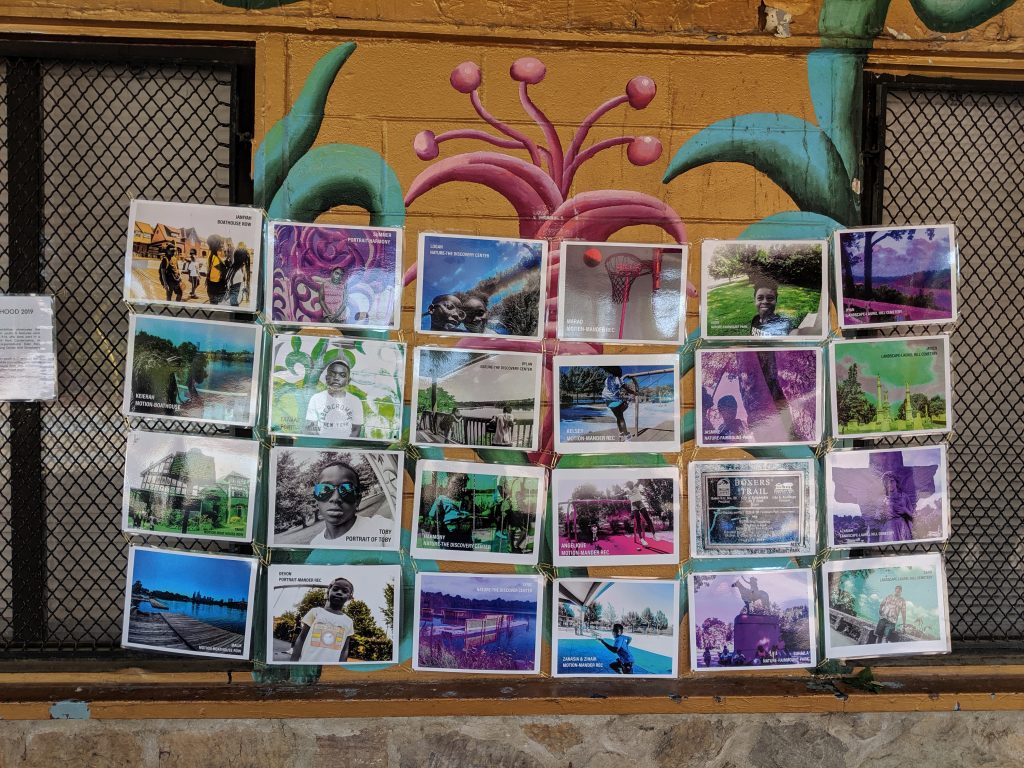On February 13, 2017, a panel of leaders, artists, and researchers in the field of creative placemaking came together at the Center / Architecture + Design to explore how artists are creating positive community change in Philadelphia. Fairmount Park Conservancy, together with Community Design Collaborative and Mural Arts Philadelphia’s muraLAB program, hosted the event as part of our new Arts & Culture program (generously sponsored by ArtPlace America and the Knight Foundation).
Jason Schupbach, Design Director at the National Endowment for the Arts, kicked things off with opening remarks, where he touched on the recently published How to Do Creative Placemaking: An Action-Oriented Guide to Arts in Community Development. In addition to sharing examples of the NEA’s efforts to foster creative placemaking throughout the country, he spoke about the power of arts and culture in strengthening one’s attachment to place, and thus, that place’s very resilience.
Schupbach then joined the evening’s panel, which included Lyz Crane, Deputy Director of ArtPlace America; Anne Gadwa Nicodemus, principal of Metris Consulting; Rasheedah Phillips, an artist, attorney, and co-founder of the AfroFuturist Affair; Kira Strong, Deputy Director of Design and Construction at the City of Philadelphia’s Rebuild Initiative; and Aviva Kapust, Executive Director of the Village of Arts and Humanities. Ashley Hahn, Managing Editor of PlanPhilly, moderated the discussion.
Photos by Steve Weinik
Here are seven important takeaways from the discussion:
1. Philly is a great city for creative placemaking.
Here in Philly we have a deep attachment and connection to neighborhoods and places. Add to that our rich history and powerful arts sector, and you have a strong environment for creative placemaking. And don’t count out Philly’s scrappiness! As panelists noted, if you can’t find the space you need because it doesn’t exist, then create it yourself.
2. Community engagement is essential.
The quality of work is high when community engagement is at the heart of it. An artist needs to first be a part of the community in order to assume a leadership role within it.
3. Philly has a “Do It Together” approach. It’s not DIY, it’s DIT.
Partnerships, partnerships, partnerships. Discovering, fostering, and building a depth of relationships is important because this work is complex, messy, and non-linear – in short, it’s human.
4. Process matters just as much as the product.
Process helps give meaning to the product. Process is about having the conversations, embracing the hard work, going to community meetings, and being uncomfortable. And sometimes the “product” can be as simple as joy or the feeling of belonging – in which case, it can be difficult to distinguish between the process and the product at all. In other words, the journey and the destination are on equal footing.
5. Art should not be inaccessible to the community at large.
It’s essential to expand the idea or definition of art – what it is, what it can mean, and what it can be – as well as “who gets to be called an artist and who gets access to…artistic spaces.”
6. Creativity is critical to survival.
Creativity exists in every community and takes many forms. As Aviva Kapust of the Village of Arts and Humanities noted, “I learn every day just by watching the young people in our communities… they’re creative every single day to survive.” The power of art lies in its ability to imagine new realities, particularly for those who are marginalized.
7. Success can only be measured with respect to each project and each community’s specific goals.
It’s only once you figure out what you hope to achieve that you can then start to figure out how to measure it. Schupbach added that if you measure what you value, people will value what you measure. Communities are not singular entities – remember that success might look and feel different for each partner and project.
To download a copy of How to Do Creative Placemaking, click here.
